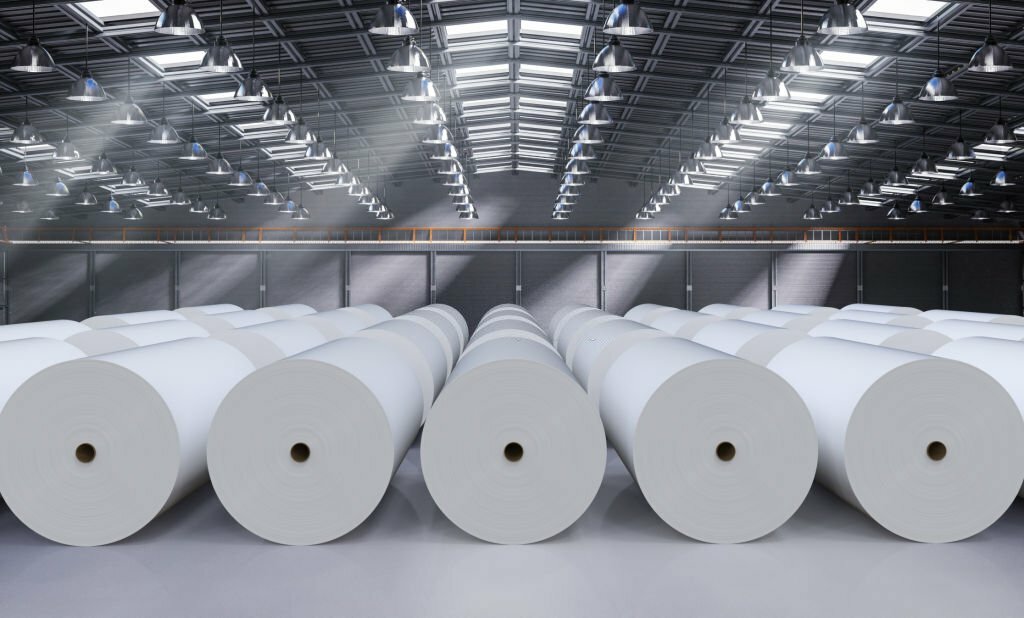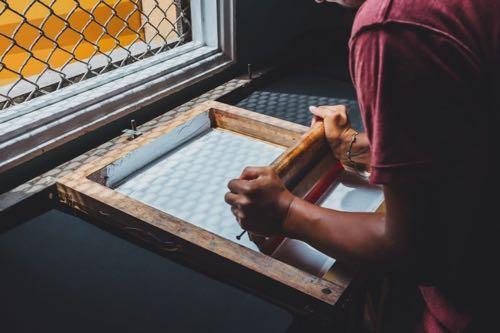These are few factors to be considered while choosing the right sublimation transfer paper.
This is an important factor, higher the ink limit (wet), heavier the paper should be in order to accept moisture from the ink without any disturbances like curling and warping.
This explains that the printing of a very complex design artwork that has mixed heavy and light ink input. This is faced with low weight papers, with the occurrence of curling and shifting after pressing. To eliminate this the best solution is using 110gsm or more that accept heavy and light inks.
Calendar heat press prefers low-gsm papers. But in heavy ink, limit and capacity are to be considered wisely. Here we consider the limitations of high capacity production and consequences like warping and curling.
The quality of the paper to be produced depends on what speed it is being printed at. Fast printing produces lightweight paper, slow printing produces thick paper.
You can contact us to find out more or view our latest stock offers here.
Low humidity : In the humidity under 45%, it’s better to choose 80gsm. When in low humidity, the paper shrinks, and the print side is hunched-up. During the process, the paper absorbs ink, which leads to the “hunch-up”. 100g and 120g paper are harder than 80g, so the “hunch-up” damages the print-head. 80gsm is softer, it could relieve the “hunch-up” and protect your print-head from damage.
High humidity : In the humidity above 70%. It’s better to choose 110-120 gsm. Since the paper is very easy to become damp with high humidity, it will become softer and stiffness is weak at the same time. If low weight paper is used, it will be hard to print smoothly because of the stiffness and hardness go down. At this time, 110-120 gsm is the best choice.

Apparels: Lycra materials, cycling, Polyamide, Swim & Surfwear, 100% polyester (stretch), running, ice hockey wear, Sports and functional textiles.
Home Usages: Curtains, Blinds, Cushions, Table Covers, Towel Cleaners, etc.
Advertisement: Flags, Banners, Felts, Gaming tables, Home Textiles.
Sublimation paper is applicable to sublimation transfer, on which can print images with mirror reversal through inkjet printing, flat printing, screen printing, and gravure printing. Then transfer the image onto media by heating and pressuring, which makes ink on the paper become a gaseous state and combine with the media.
Heat transfer paper is applicable to heat transfer, on which images can be printed through flat printing or gravure printing, and then combined with media by heating and pressuring in order to transfer the image onto media.
Ink and Media Ink: Sublimation paper is used with sublimation ink. Heat transfer paper is used with sublimation ink, pigment ink, solvent ink or others. Media: Sublimation paper can be transferred onto polyester, mouse pad, banner and hard surfaces, such as mugs, ceramic and aluminium plate. But heat transfer paper is usually transferred onto cotton.
Successful dye-sublimation requires the following two-part process:
This device is used if you’re planning to sublimate on t-shirts and small items such as caps, mugs, plates, and shoes.
These heat presses are large format presses that are built for flags, large exterior banners, and other large soft-signage applications, as well as day-to-day soft signage and fabric sublimation. With the addition of table attachment to your calendar unit, users can cut and sew apparel pieces.
Although they can’t effectively manage the kind of rolls and fabric sizes that a Calendar heat press can, flatbed style heat presses are versatile presses that can heat transfer onto fabric as well as aluminium, hardboard, floor mats and other unique media.
A 3D vacuum heat press is a compact desktop machine that allows heat transfer onto materials with a curved edge or shape. Sublimation blanks and pre-treated objects, such as smartphone covers, mugs, picture frames, sporting goods, buttons and others available for sublimation by this device.
